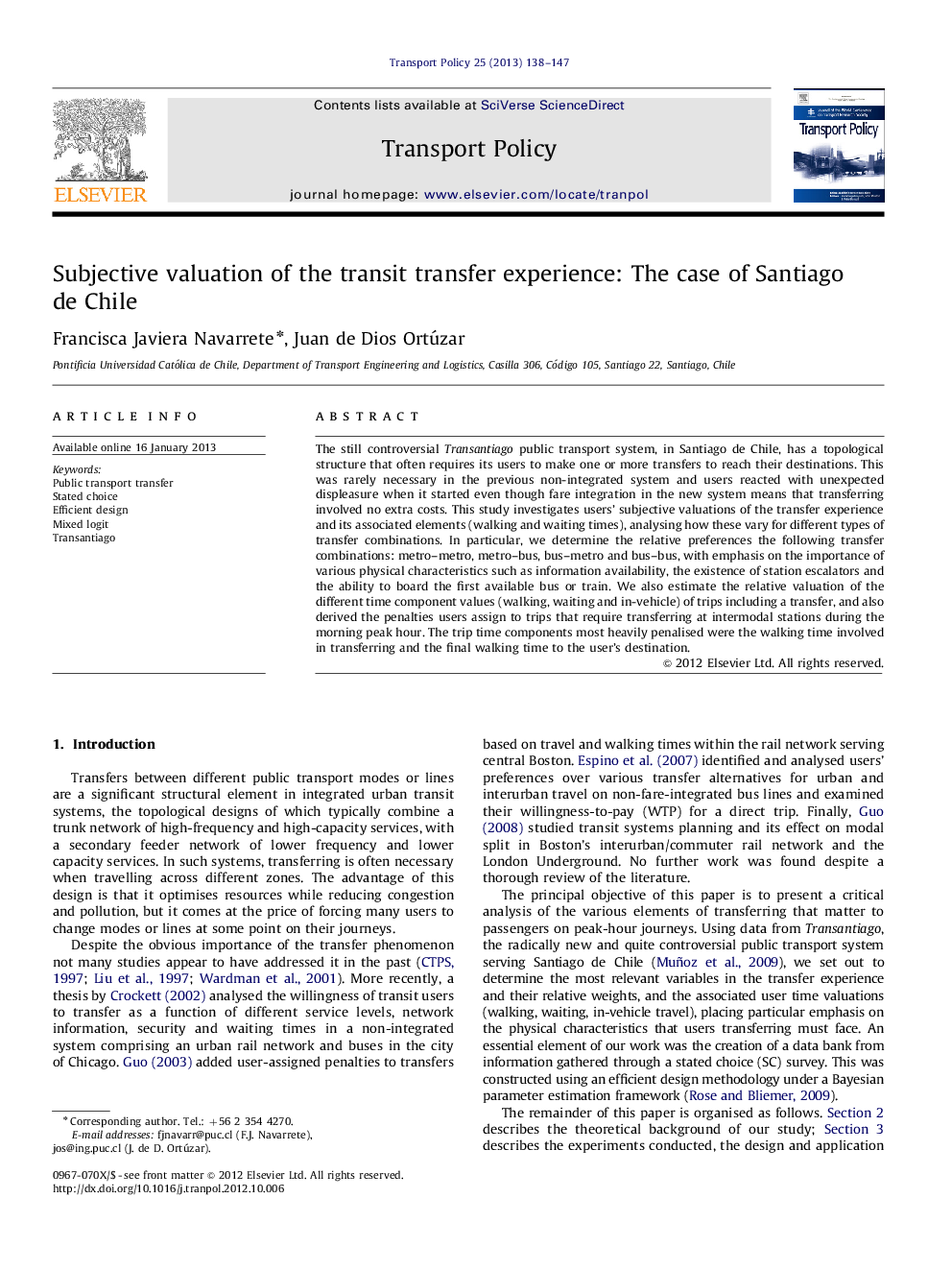| کد مقاله | کد نشریه | سال انتشار | مقاله انگلیسی | نسخه تمام متن |
|---|---|---|---|---|
| 1065015 | 1485852 | 2013 | 10 صفحه PDF | دانلود رایگان |

The still controversial Transantiago public transport system, in Santiago de Chile, has a topological structure that often requires its users to make one or more transfers to reach their destinations. This was rarely necessary in the previous non-integrated system and users reacted with unexpected displeasure when it started even though fare integration in the new system means that transferring involved no extra costs. This study investigates users' subjective valuations of the transfer experience and its associated elements (walking and waiting times), analysing how these vary for different types of transfer combinations. In particular, we determine the relative preferences the following transfer combinations: metro–metro, metro–bus, bus–metro and bus–bus, with emphasis on the importance of various physical characteristics such as information availability, the existence of station escalators and the ability to board the first available bus or train. We also estimate the relative valuation of the different time component values (walking, waiting and in-vehicle) of trips including a transfer, and also derived the penalties users assign to trips that require transferring at intermodal stations during the morning peak hour. The trip time components most heavily penalised were the walking time involved in transferring and the final walking time to the user's destination.
► Value transfers' physical features and travel time components by Transantiago users.
► Analysis included focus groups and purposely designed stated choice experiment.
► Transfers at special intermodal stations valued more negatively by peak hour users.
► Willingness to pay to avoid transfers at these stations was roughly 1/4 of the fare.
► Most penalised time component was transfer wait time (8% of fare per min saved).
Journal: Transport Policy - Volume 25, January 2013, Pages 138–147